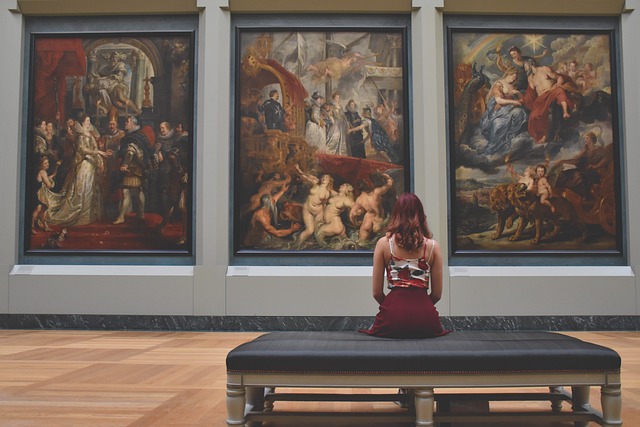Journey Through Time: A Virtual Tour Museum Adventure
In an era characterized by rapid technological advancement, exploring the world has taken on an entirely new dimension. The dawn of virtual reality has revolutionized how we perceive and interact with cultural heritage. One of the most exciting opportunities that this technology affords us is the ability to embark on a virtual tour museum adventure. These experiences not only transport us to different times and places but also allow us to engage with art, history, and science from the comfort of our own homes.
The Concept of Virtual Museum Tours
Virtual museum tours leverage cutting-edge technology to create immersive experiences that replicate the sensation of walking through a museum. Visitors can navigate through various exhibitions, view artifacts from different angles, and even listen to detailed descriptions from experts. These digital journeys enable a global audience to access treasured collections that might otherwise be hidden away in distant corners of the world.
The Evolution of Virtual Tours
The concept of virtual tours is not entirely new; however, the level of interactivity and realism has drastically improved over recent years. Early implementations relied heavily on static images and limited multimedia elements. As technology progressed, museums began to integrate 3D modeling, augmented reality, and even immersive virtual reality environments that enhance the overall visitor experience.
Initial Steps: Pioneering the Virtual Experience
The first significant leap into virtual museum exploration came in the early 2000s with basic 360-degree panoramic views of exhibition spaces. Institutions such as the Louvre Museum in Paris and the British Museum in London were among the trailblazers in digitizing their collections. These initial efforts laid the foundation for what was to come—moving from simple visual representations to fully interactive narratives that engage visitors in storytelling.
Current Trends in Technology
Today’s virtual museum tours have become sophisticated, leveraging technologies such as:
- Virtual Reality (VR): Using VR headsets allows visitors to experience associations beyond mere sight. They can interact with objects, explore environments, and walk through historical settings in ways that create immersive storytelling.
- Augmented Reality (AR): QR codes and smartphone applications enable enhanced experiences, allowing visitors to see additional information when they scan an object or artwork, opening a portal to the past.
- Artificial Intelligence (AI): AI-driven chatbots and virtual assistants provide personalized guidance and answers to questions throughout the tour, creating a tailored visitor experience.
The Benefits of Virtual Museum Tours
One of the most compelling advantages of virtual museum tours is accessibility. People from all walks of life, including those with disabilities or financial constraints, can engage with cultural institutions without the limitations of physical travel. Additionally, these virtual tours foster educational opportunities by providing resources, interactive workshops, and educational programs aimed at diverse audiences.
Another notable benefit is the preservation of art and artifacts. By digitizing collections, museums can maintain records while reducing the wear and tear on physical items usually exposed to large crowds. Virtual tours not only secure artifacts but also present them in innovative ways that can heighten appreciation and understanding.
Popular Virtual Museum Tours to Experience
As virtual tours have gained traction, numerous museums worldwide have developed exciting online experiences worth exploring. Here are a few notable mentions:
The Louvre Museum
One of the most famous art museums globally, the Louvre’s virtual tour allows users to navigate through exhibitions, including the Mona Lisa and the Venus de Milo. Visitors can examine these masterpieces from various angles and learn about their historical contexts.
The British Museum
The British Museum offers interactive online exhibitions that feature artifacts from around the world. Their virtual experience includes 3D models of various artifacts and detailed information, enriching the learning experience significantly.
The Rijksmuseum in Amsterdam provides an in-depth virtual experience with its Night Watch exhibit. Their tour includes an opportunity to zoom in and appreciate details in famous paintings while offering curated audio guides that delve into the stories behind the artworks.
In Florence, Italy, the Uffizi Gallery showcases a virtual tour that highlights its rich Renaissance art collection. The tour includes engaging commentaries from art historians, which further enhances the viewer’s understanding of the artworks.
Creating Your Own Virtual Museum Adventure
Embarking on your virtual museum adventure is as simple as accessing the internet. To enhance your experience, consider the following tips:
Choose Your Destination
Decide which museum or exhibition you wish to explore. If you have specific interests—be it contemporary art, ancient civilizations, or scientific discoveries—research institutions whose collections align with your preferences.
Prepare for the Tour
Check the museum’s website for any special features of their virtual tour. Some may provide guided experiences, interactive timelines, or curated playlists. Familiarizing yourself with available resources can significantly enhance your engagement.
Set the Environment
Make your visit as immersive as possible by creating a conducive environment. Dimming lights, using headphones, and minimizing distractions can help you fully absorb the rich content of your virtual tour.
Engage with Interactive Features
Take advantage of features such as guided audio, supplemental reading materials, and interactive quizzes that many virtual tours offer. Engaging actively will deepen your understanding and retention of information.
The Future of Virtual Museum Tours
As we look to the future, the potential of virtual museum tours is just beginning to unfold. The seamless integration of emerging technologies promises to elevate these experiences even further. Imagine attending live events, lectures, or workshops where you can interact with art professionals or historians—all within your virtual landscape.
Furthermore, the continued collaboration between cultural institutions and tech innovators will enable expanded offerings, such as multi-sensory experiences incorporating sound, touch, and scent, making users feel even more connected to the history and art represented.
Conclusion
The journey through time, facilitated by virtual museum adventures, opens doors to a treasure trove of knowledge, creativity, and inspiration. These experiences transcend geographical boundaries, democratizing access to art and history while preserving and promoting cultural heritage for future generations. Whether you are an art lover, history buff, or simply curious about the world, virtual museum tours offer a unique opportunity to dive deep into the realms of human expression and experience the stories that shape our collective identity.


